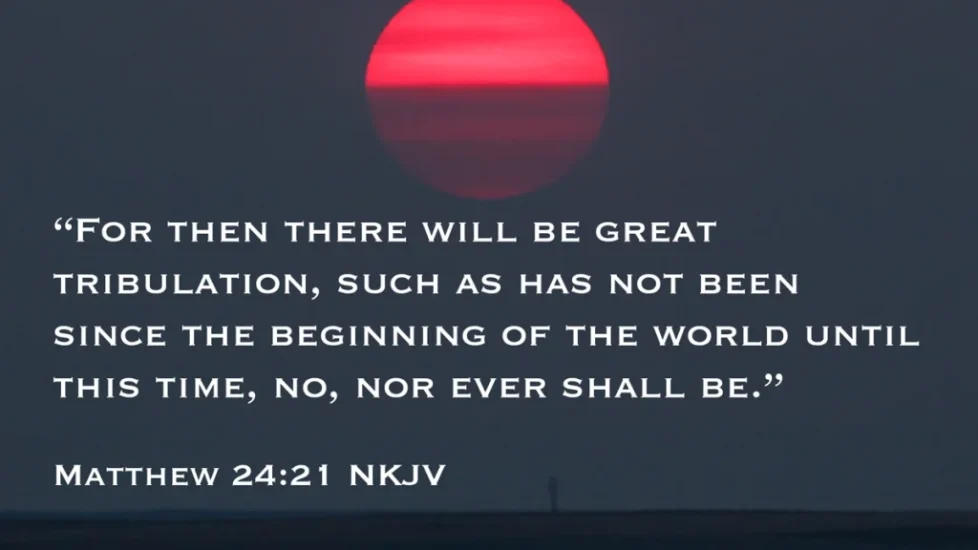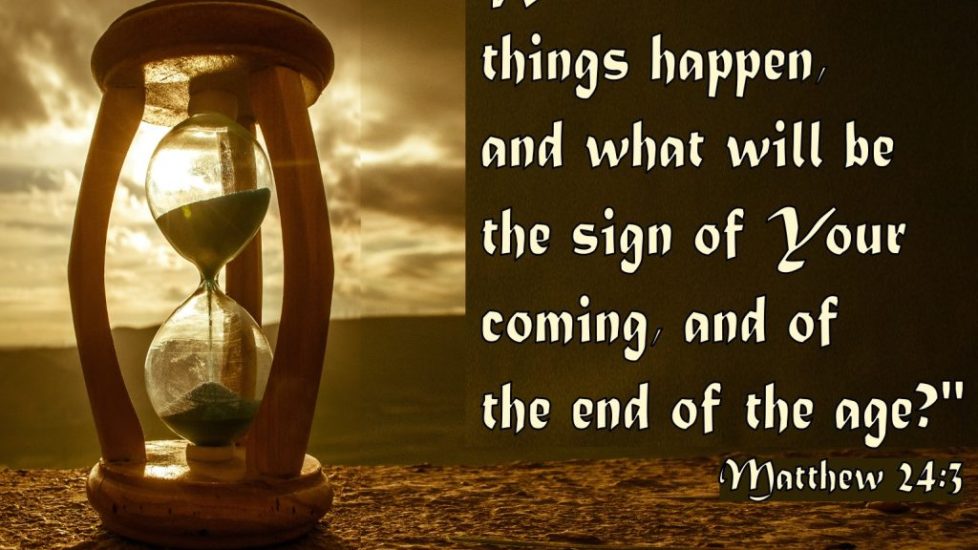The Parable of the Talents
Matthew 25:14-30
What will you do with the opportunities God has given you?
Remember, we are in the middle of our Lord’s Olivet discourse concerning the future and, in particular, His Second Coming. Again and again, Jesus has urged His disciples and us to be alert and ready because we do not and cannot know when He will return. We must live so as not to be caught off-guard. That means to live in faithfulness to the Lord, serving Him, and doing His will. This was the Lord’s own application of the parable of the wise and foolish virgins in Matthew 25:1-13. Jesus concluded that parable saying, “Watch therefore, for you know neither the day nor the hour in which the Son of Man is coming.” (Matt. 25:13). Jesus expects His disciples to watch and be prepared at all times for His coming.
Now, in the parable of the talents, we will find that it has a similar elements to the other parables Jesus just told: a master who goes away for a period of time, his return coming at a time they do not expect, and the judgment of those who either were or were not prepared for it. But today’s parable makes still more explicit what readiness looks like. The parable of the virgins calls us to watch; the parable of the talents calls us to work.
Readiness is not a matter of passively waiting, but of active working. Being ready for the Lord’s return means serving Him faithfully in this world while we wait for His coming again. We should be preparing for Christ’s return by being faithful stewards of the opportunities God has given us.
So, let’s look at the parable of the talents together and see what Jesus teaches us about preparing for his return.
1. Resources Entrusted (Matt. 25:14-18)
Jesus begins this parable by connecting it to the previous parable about the ten virgins. In the LSB, Matthew 25:14 reads, “For it is just like a man about to go on a journey, who called his own slaves and handed over his possessions to them.” (Matt. 25:14 LSB). What is just as a man going on a journey? The same topic that Jesus just illustrated in the previous parable, as He says in Matthew 25:1, “Then the kingdom of heaven shall be like …” This is why the New King James Version supplies the context by inserting “For the kingdom of heaven is like.”
What will the kingdom of heaven be like? “… a man about to go on a journey, who called his own slaves and handed over his possessions to them” (Matt. 25:14). Notice that the possessions belonged to the master. He was the owner and the slaves were stewards or managers of whatever the master entrusted. When the master gave the talents to the servants, both they and he knew that it was still his money. They knew that they were accountable for the master’s money. They never thought it was theirs.
From this we understand a crucial biblical truth. All that we have belongs to God. In the ultimate sense, we own nothing. Even your life is a gift from God. All the things we think are ours are really God’s. He made them, He entrusted them to us, and one day He require an accounting for what we did with them. God is the owner; we are the stewards entrusted with particular responsibilities.
Matthew 25:15 says: “And to one he gave five talents, to another two, and to another one, to each according to his own ability; and immediately he went on a journey.”
It is important for us to know that the word “talent” in this parable does not means what it means in English today. We think of a talent as a natural human ability or skill. But the word “talent” in the Bible literally refers to a unit of weight. A biblical talent weighed about seventy-five pounds and it was used as a value for money, either a talent of silver or gold. Today, that much silver would be worth about $50,000, and that much gold would be worth about $3,000,000. Most scholars say that one talent of silver in those days would represent about 20 years wages for a common laborer. So, a talent was a significant sum of money. They all were given huge responsibilities.
Notice how the master distributes his possessions. The owner didn’t practice equity, dividing everything equally to each servant. No, he gave them all different amounts, “to one he gave five talents, to another two, and to another one.” And Jesus tells us why they received these different various amounts. It was because he gave them “to each according to his own ability.” The master knew how much each could handle and gave expectations based on each one’s personal abilities.
Here we find the sovereign design of the Lord who entrusts each of us with various resources, abilities, and gifts so that we might use all to His glory. So, some have superb intellects, others creative abilities; some have musical gifts while others are gifted with financial resources; some can speak, others can write; some can organize, others are great doers that get the job done. All of it comes from the Lord. All of us are therefore responsible to make the most of whatever the Lord has entrusted to us as wise stewards.
Listen, God is not obligated to treat you exactly like He treats anyone else. He can give you more or less than others; and He does. You have more than some and less than others. You have more money and talent and opportunity, more strength, better health, and better connections than others. And you have less of all that than others.
We need to be careful not to envy those who have more abilities or possessions than us, or be prideful over those who have less. Rather, we should be grateful. This week as we celebrate Thanksgiving, it is a good time for us to remember this and give thanks to the good Lord for the good gifts He has given. It’s not what you have, but what you do with what you have, that makes the difference. We need to trust God’s sovereignty and be grateful for whatever He has given us and determine to use whatever God has given us for His glory.
Then, notice what the servants did with the talents that the master entrusted to them. Two of them went to work right away to make the most of what they had:
16 “Then he who had received the five talents went and traded with them, and made another five talents. 17 And likewise he who had received two gained two more also.” (Matt. 25:16-17).
Here we see a good picture of faithfulness. When it says that the servant “traded with them” it literally means that he went to work with them. He poured out his energy and wisdom to make the most of the opportunity that the master had given him. He made (or gained NASB) five more. The servant who had been given two talents did the same, he gained two more. Both had an excellent return for their hard work.
Jesus is coming again. And in the meantime, Jesus the master, has entrusted to us some of His most precious and valuable things to manage. We are the servants in this parable. In practicable terms, a talent can represent any life resource that God has entrusted to our care.
Pastor Gary Hamrick applied this to six major areas of life that God entrusts to us: money, abilities, authority, possessions, position, and influence, asking about each: “If you are financially blessed, are you financially generous for the kingdom?”; “Whatever you can do well, are you doing it well for God?”; “If you have been put in charge of things, are you using that authority to promote the kingdom?”; “If you have resources and possessions that can be used for the kingdom, what are you doing with those resources for the glory of God?”; “If you are a mother, father, grandparent, an employee or an employer, student, or a teacher, are you using your position or status in life that God has given you to glorify him?”; “If God has opened doors for you such that you have opportunity to influence people, are you using that influence to impact the kingdom?”[1]
The case of the third servant is something else entirely. Jesus says, “But he who had received one went and dug in the ground, and hid his lord’s money.” (Matt. 25:18). He did nothing with the talent he was given except to bury it in the ground so he wouldn’t lose it. He didn’t work with it. He didn’t invest it. Keeping it in this way meant that there was no possibility of loss, but it also meant that there was no possibility of gain.
So we see the resources entrusted. Next, we see …
2. Faithfulness Rewarded (Matt. 25:19-23)
Jesus says, “After a long time the lord of those servants came and settled accounts with them.” (Matt. 25:19). Again, Jesus indicates to His disciples that His return would not be immediate but only after considerable time. And at His return, the Lord will call His servants to account for what He has entrusted to them. The Lord’s return will be a day of judgment. Every one of us will have to answer for what we did with what God gave us. You see that the servants knew this accounting was coming.
The first two servants were both faithful with what God had given them, and God commended both of them for it. Can you sense the enthusiasm of the first servant when he presents his return to his lord? Jesus says, “So he who had received five talents came and brought five other talents, saying, ‘Lord, you delivered to me five talents; look, I have gained five more talents besides them.’” (Matt. 25:20). He found great satisfaction and delight in pleasing his lord. The second servant had the same attitude, “He also who had received two talents came and said, ‘Lord, you delivered to me two talents; look, I have gained two more talents besides them.’” (Matt. 25:22).
How does the master reward their them? It’s the same in both cases, “His lord said to him, ‘Well done, good and faithful servant; you were faithful over a few things, I will make you ruler over many things. Enter into the joy of your lord.’” (Matt 25:21,23). First, there is a commendation: He calls each one a “good and faithful servant,” and says to him, “you were faithful.” What does he commend them for? Faithfulness.
Second, there is a promotion: “you were faithful over a few things, I will make you ruler over many things.” When you are faithful with little, you will be entrusted with more. Do you want God to entrust you with more in this life and the next? Then be faithful with what you’ve got!
Third, there is an invitation: “Enter into the joy of your lord.” The great satisfaction was not in basking in honor but in continuing to serve the one whom they loved with unflagging devotion. This is how they entered into the joy of their lord.
What a picture for us! The reward of faithfulness is that the Lord entrusts us with more of that which belongs to Him and which we are to use for His glory. Having found delight in “a few things,” He increases the personal delight and satisfaction by making us “ ruler over many things.” Listen, our service to the Lord does not end in this life. Heaven is no place for lazy bums! ” And there shall be no more curse,” John wrote, ” but the throne of God and of the Lamb shall be in it, and His servants shall serve Him” (Rev. 22:3). No longer hindered by tiredness or need for sleep or lost opportunity by darkness, we will continue to serve our Lord for eternity.
So, if you do not find delight in serving Christ now, I’m afraid that heaven will not be a very welcome place for you! As the slaves found sheer pleasure in being able to say they gained double what they had. Out of joy they served and were assured of continued service, and that through being enveloped in the joy of the master. Such joy is so rich, that nothing can compare to it.
But notice the contrast of the third servant. There we see …
3. Opportunity Squandered (Matt. 25:24-30)
Jesus says,
24 “Then he who had received the one talent came and said, ‘Lord, I knew you to be a hard man, reaping where you have not sown, and gathering where you have not scattered seed. 25 And I was afraid, and went and hid your talent in the ground. Look, there you have what is yours.’” (Matt. 25:24-25).
Notice that the lack of faithfulness in this servant was due to his bad attitude about his master. This slave immediately begins to find fault with his master and place the blame on him. He calls him a hard man. He accuses him of harvesting where he has not sown and gathering where he has not scattered seed.
Was he right in what he said to the master? Clearly all three men knew the master would come back, and they all knew that he would demand an accounting. But the first two men focused on the fact their master, besides being a fair man, could also be very generous. They knew if they did a good job, they would have a great reward at the end. The third fellow lived in fear and so didn’t do anything at all. His fear of punishment was far greater than his desire to be rewarded.
So what’s his problem? He thought he knew his master, but he didn’t. Because he didn’t know him, he didn’t trust him. Because he didn’t trust him, he did nothing.
What was the master’s judgment? Jesus says,
26 “But his lord answered and said to him, ‘You wicked and lazy servant, you knew that I reap where I have not sown, and gather where I have not scattered seed. 27 So you ought to have deposited my money with the bankers, and at my coming I would have received back my own with interest. 28 Therefore take the talent from him, and give it to him who has ten talents. 29 For to everyone who has, more will be given, and he will have abundance; but from him who does not have, even what he has will be taken away. 30 And cast the unprofitable servant into the outer darkness. There will be weeping and gnashing of teeth.'” (Matt. 25:26-30).
The master says that this servant is “wicked and lazy.” He is worthless and has shirked his responsibility. The third servant tried to use his bad thoughts of the master as an excuse for why he had done nothing with the one talent the master had given him. But even if what the servant said about him was true (and it’s not!), that still does not excuse the servant’s behavior. If the servant was afraid of the master and thought the master was that harsh, he should have at least put the money in the bank and earned some interest for the master. As it is, he did nothing, and that was unacceptable.
Christ operates on the principle of faithfulness. He is faithful even when we falter and fail. So He calls for faithfulness in us, promising that faithfulness meets with His pleasure and has the assurance of abundant reward in His presence. “ For to everyone who has, more will be given, and he will have abundance; but from him who does not have, even what he has will be taken away.” Doing nothing for God is unacceptable. Not only will you not receive a reward, you will also lose what God initially gave you as well. We have a saying for that don’t we? You’ve got to use it or lose it! God expects you to use the opportunities and gifts He has given you for His glory.
Sadly, the parable of the talents ends the same way as the parable of the two servants, with the unfaithful servant being thrown out into the darkness where there will be weeping and gnashing of teeth.
And this gives us the eternal perspective of this parable. What is the most valuable thing that the Lord has left with us, wanting us to cherish and to duplicate? It’s salvation. It’s the Gospel. It’s the Good News of Jesus Christ for the salvation of souls for whoever believes and receives. That’s what carries eternal weight in this parable.
MacArthur concludes about this parable,
In the kingdom, in the church, in the assembly of the redeemed, there are going to be those who are prepared and serving the Lord. There are going to be those who are unprepared and who outwardly may be active but are not ready for his coming. And when the Lord comes, there will be a separation and a delineation based upon their service rendered to him. All excuses set aside. False service will be ended and that which they appear to be doing will be given to others in the kingdom and throughout eternity.[2]
God has entrusted us with the gospel of Jesus Christ. What have you done with the opportunity the Lord has given for you to believe the gospel of Jesus Christ? Have you believed that He died for your sins and was raised from the dead to give you eternal life? And if so, is that new life bearing fruit, multiplying in faithful service and faithful sharing of the gospel with others? Will you hear the Lord say on that day, “Well done good and faithful servant … enter into the joy of your Lord”?
—————————————————
[1] Gary Hamrick, Get Ready ‘cause Here I Come – Part 3, https://assets01.cornerstonechapel.net/documents/studyguides/20210321.pdf
[2] John MacArthur, https://www.gty.org/sermons/2377/the-tragedy-of-wasted-opportunity-part-2








